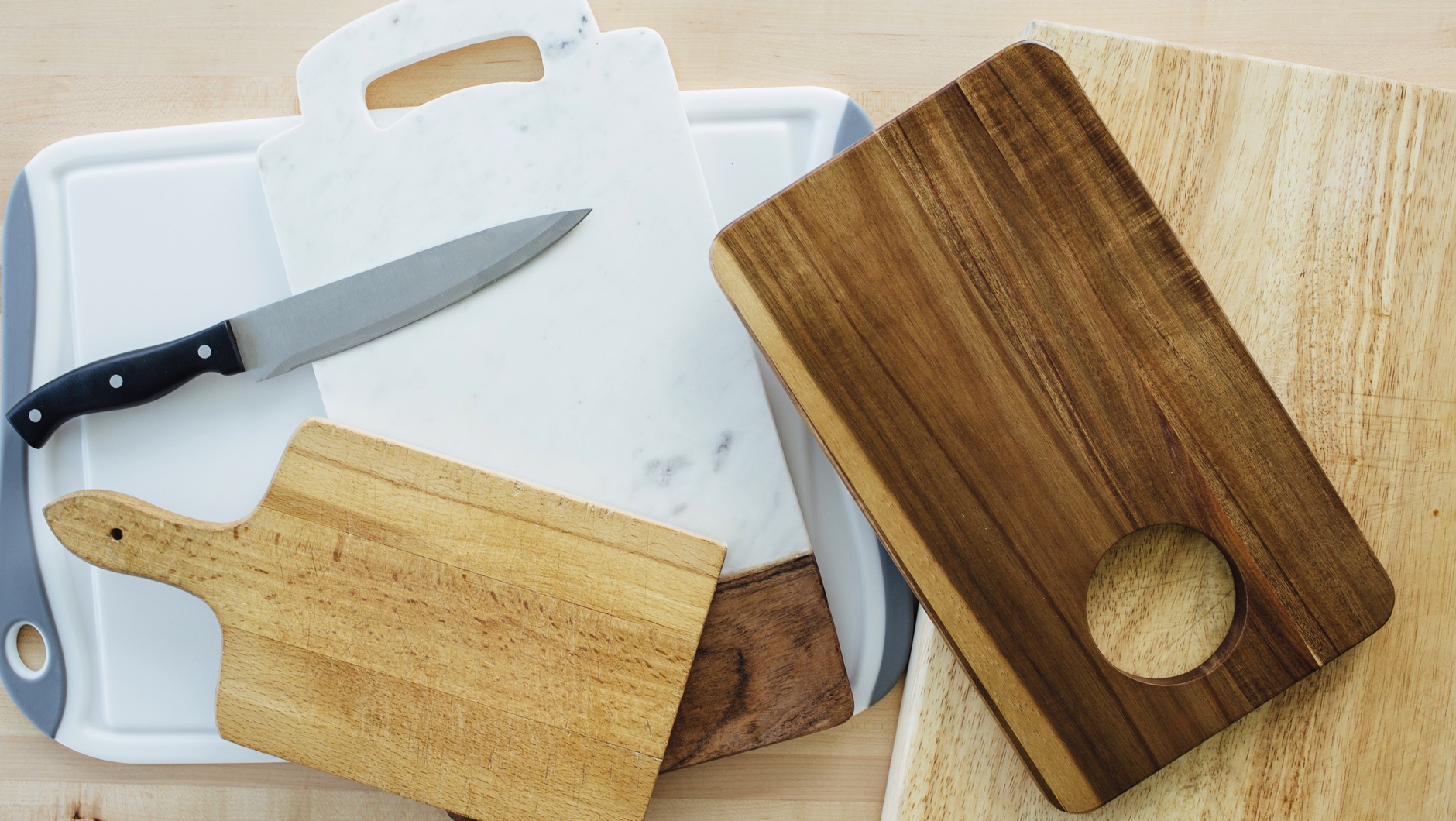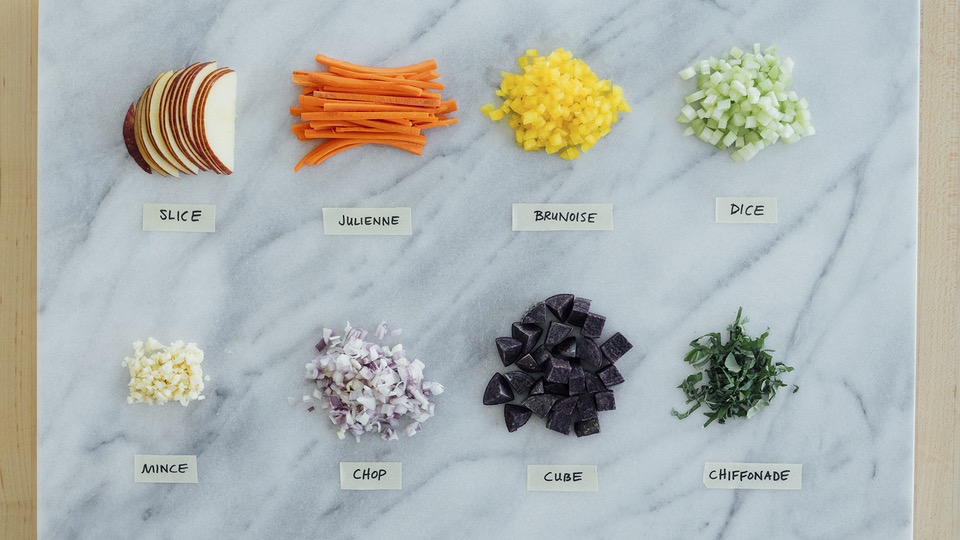Cutting boards are one of one of the most underrated tools in the kitchen. They keep your work areas clean, knives sharp, and countertops scratch-free. Beyond practicality, they also double as beautiful serving boards for hors d’oeuvres and desserts. With such subtle powers, cutting boards can be easily neglected.
From wood to marble to plastic, discover the best cutting boards for the job, how to care for them, and what habits to avoid.

Wood
A wooden cutting board is like a pair of great jeans: practical and durable. Similar to cast iron, wooden boards can last a lifetime with the right care. While wood is somewhat absorbent and can occasionally warp or crack, choosing the right board and treating it well will pay off in the long run.
- Do: Buy a high-quality (if possible, artisan-made) cutting board in a hardwood, like maple, which provides a more even surface. Softer woods wear out knives and chip tiny wood shards in your food.
- Don’t: Cut raw meat or seafood on wood. Wood’s main flaw is that it’s hard to disinfect and can absorb and retain food odors. Veggies, bread, cheese, and fruit are better candidates.
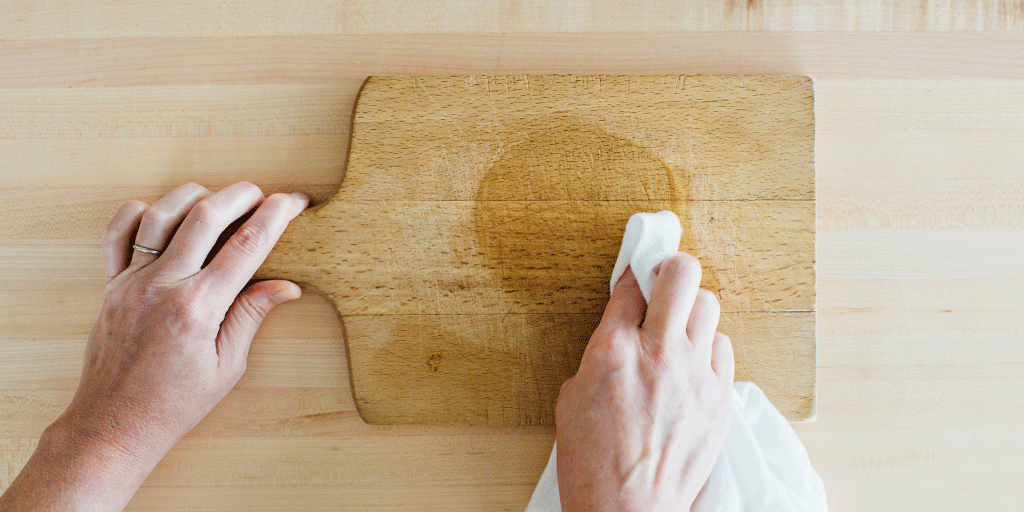
- Do: Keep wooden boards dry and oiled with a soft cloth to protect from water and odors. Use food-safe mineral oil or coconut oil.
- Don’t: Oil your cutting board with vegetable oil. It can go rancid.
- Do: Clean your wooden cutting board with mild dish soap and warm water. Allow the cutting board to air-dry.
- Don’t: Clean cutting boards in dishwasher or soak in water.

Marble
While marble offers a clean background for food photography, it’s not the most practical for a busy kitchen. Foods and sharp blades slide off the smooth surface, and its heavy weight is a burden for washing and storing. But if you have one already or can’t resist its beauty, here’s how to use it:
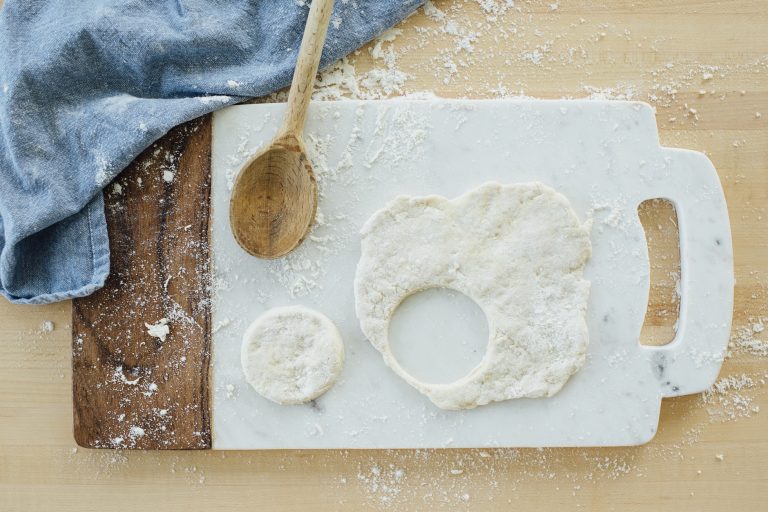
- Do: Use marble for working with doughs for pies, biscuits, homemade pastas, and other baked goods because it’s naturally nonstick and stays cool to the touch.
- Don’t: Chop anything (especially veggies). Marble can damage knives and dangerous slips can happen easily.

- Do: Hand-wash marble with a mild dish detergent and a soft sponge or rag. Sanitize with a solution of half water and half vinegar. Too much acid is not good for marble.
- Don’t: Clean in the dishwasher or expose marble to drastic temperature changes, which can cause cracks.
- Do: Show it off! Chill marble in the fridge then use it to make a stunning cheese plate at your next gathering. Marble won’t damage the blunt-edges on cheese or butter knives.
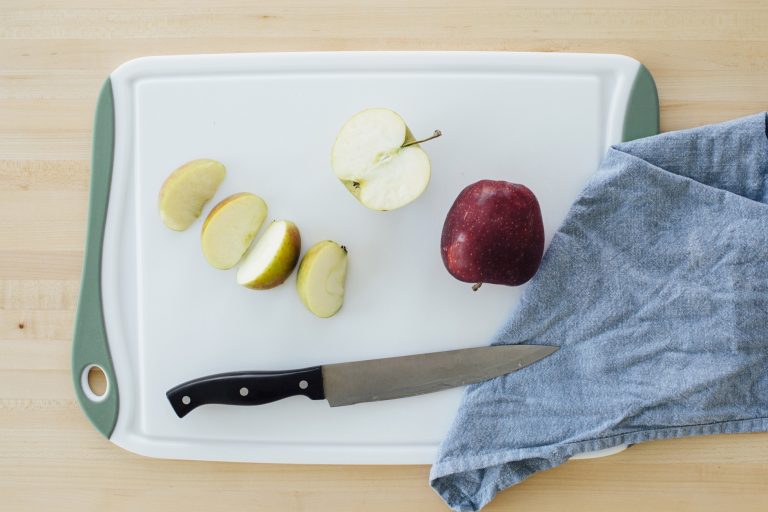
Plastic
Plastic is a jack-of-all-trades. Got a juicy steak to slice or oysters to shuck? Plastic’s hard, nonporous surface helps prevent cross-contamination with other foods. It’s also easy to clean (hello, dishwasher!) and extremely durable.
While you may not whip out a plastic cutting board to show off a beautiful spread of charcuterie, you’ll find yourself reaching for it for tasks big and small. Here’s how to make plastic perform:
- Do: Color-code plastic boards for food safety. Do what the chefs do and use green for produce, red for meat/poultry, and blue for seafood.
- Don’t: Expose plastic cutting boards (or any other plastic kitchen tools, for that matter) to heat. Throw away any cutting boards with melted spots or grooves that look “furry.”
- Do: Put a damp dish towel under a plastic cutting board to keep it from sliding. This is especially helpful when kneading dough.
- Don’t: Forget to sharpen your knives. Plastic is so durable that it can be tough on blades.
- Do: Disinfect the board after you cut raw meat or seafood with a paste of equal parts baking soda, salt, and water.
Cutting Board Storage Hacks
Now that you know how to care for your cutting boards, here are a few clever ways to store them:
- Affix a plastic rack inside a cabinet door. A thin magazine rack from the stationery store works great.
- Install rows of vertical dowels in a small section of your pantry or cabinets to hold your boards.
- Use that slim, odd-size cabinet beside your dishwasher or oven for storage.


